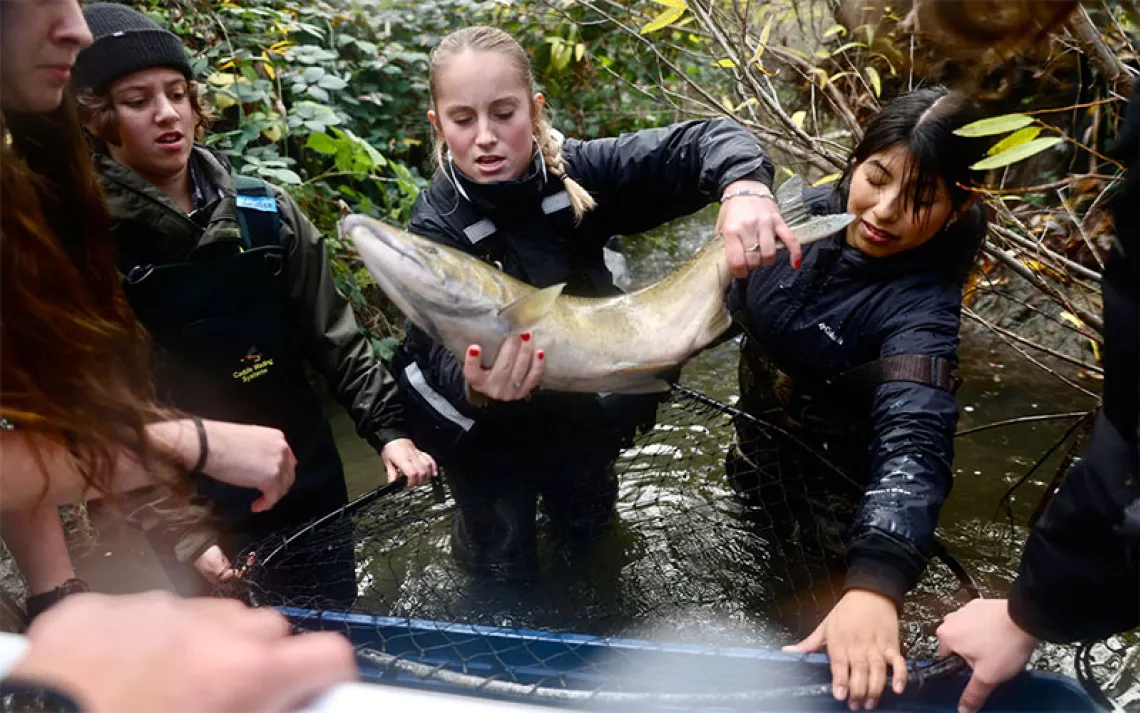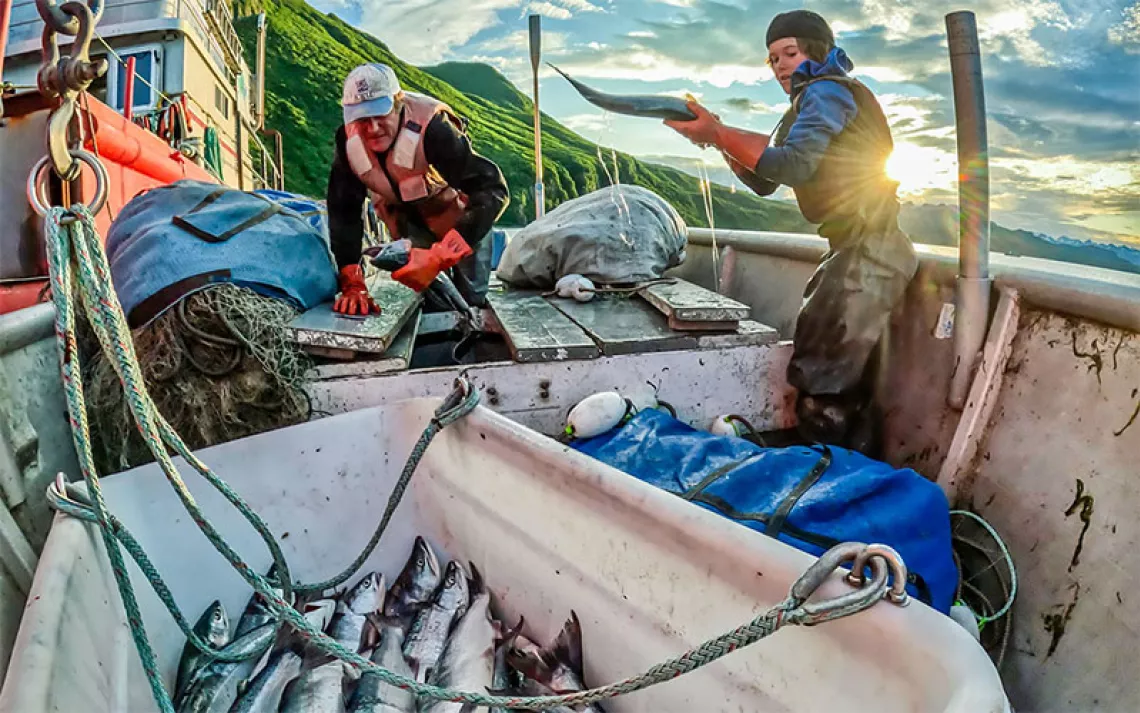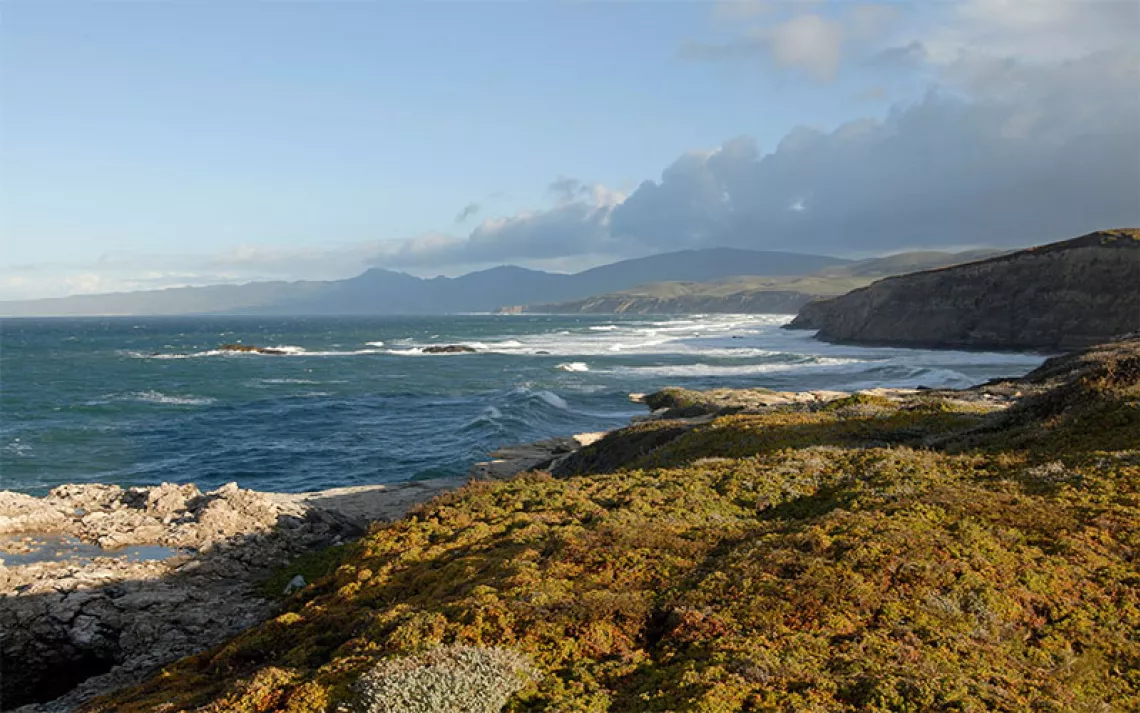Blue Crabs Are In Decline Up and Down the Atlantic Seaboard
A South Carolina native is helping conservation efforts by connecting people to water
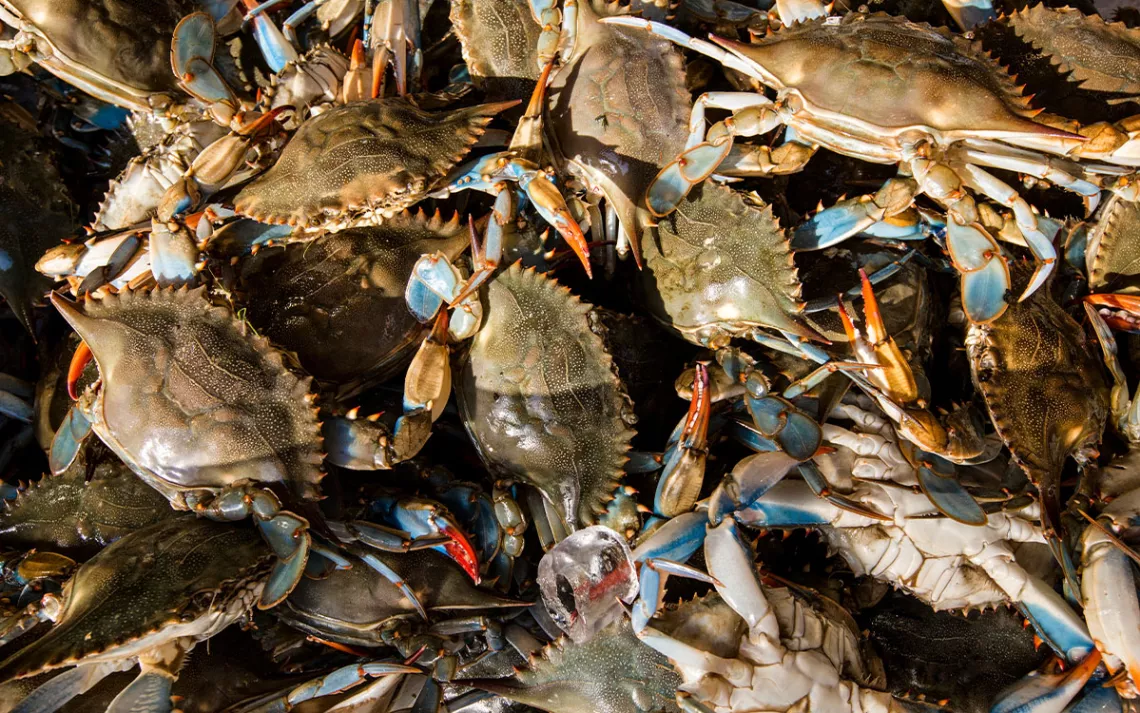
Photo by J. Scott Applewhite/AP File
A cold breeze blew when Tia Clark opened the gate at a downtown Charleston marina on the Ashley River. She arrived before me—setting up baskets, nets, and bait—so we could get down to the art of crabbing right away.
The first thing she taught me is that the Atlantic blue crab (Callinectes sapidus) is a “beautiful savory swimmer,” according to the translation of its Latin name. It’s no wonder that the invertebrate has played an important role in subsistence fishing in the region, dating back to early Indigenous peoples and the Gullah Geechee, descendants of enslaved people who were captured and brought from Africa to the United States to work in rice, indigo, and cotton plantations. Every bite of crab gravy, crab gumbo, crab rice, crab soup, crab stew, deviled crabs, and low-country crab boil is part of the cultural history of the area.
Blue crabs support one of South Carolina’s oldest and largest fisheries, with annual sales valued at over $6 million. In addition to being a food source, they are a critical link in the coastal life web, connected to the health of salt marshes and the coastline. However, since the start of severe drought in 2000, blue crabs have experienced two decades of decline, especially during the fall, when most crabs are harvested commercially.
“Drought has a big effect on our estuaries,” said Michael Kendrick, associate marine scientist at the Marine Resources Research Institute of the South Carolina Department of Natural Resources (SCDNR). “It changes where brackish water is within the estuary and can lead to suboptimal habitat conditions, as well as die-offs of salt marshes—the base of the coastal food web.”
Changes in the environment impact the crabs’ complex life cycle and their numbers from year to year, and the SCDNR has monitored the health of the population since the late 1970s to study their status throughout South Carolina. Estuarine systems in the state—as well as in Georgia and the southern North Carolina coast—are dominated by salt marsh systems with intertidal oyster reefs and stands of smooth cordgrass that provide important habitat for blue crabs. These environments, with their abundant food resources and refuge from predation, are extremely valuable for juvenile crabs. They’re also essential during the mating season, which is believed to take place in upper estuary waters from March through September.
As droughts occur, the optimal salinity balance that salt marshes represent moves farther upstream, where there’s less acreage available for a marsh environment, squeezing crab populations into smaller and smaller habitats. That space isn’t enough to support large blue crab numbers. “If there’s an under-regulated harvest while environmental factors are stressing the population, those stressors can be exacerbated,” Kendrick said. “Developing guardrails to maintain a sustainable population is among the goals for natural resource management.”
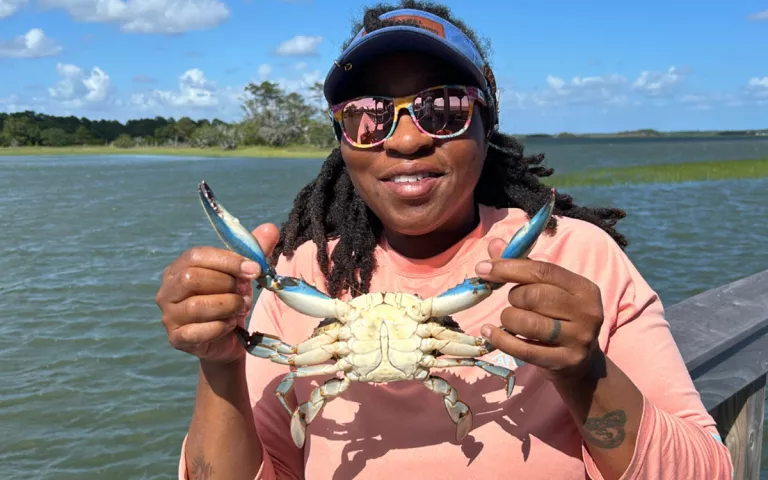
Tia Clark shows off a beautiful South Carolina blue crab.| Photo by Robbie Mottinger
According to the January 2023 Status Report & Recommendations for the Sustainability of South Carolina’s Blue Crab Fishery, shifting climate patterns from cold and wet conditions to warm and dry conditions have impacted the abundance of blue crabs. And warmer winters have led to earlier spawning activity. The general pattern with blue crab abundance is that it’s been declining since the 1900s.
Recently, the South Carolina legislature added several modifications to its blue crab fishing rules, which will take effect on July 1, 2025. Intended to help ensure the sustainability of the fishery, these new modifications pertain to both commercial and recreational crabbing and address ways to prevent overexploitation of the blue crab population. They stem from recommendations made in the SCDNR’s January 2023 Status Report and include license requirements, standards for escape rings in crab pots, limits (such as no more than one bushel per day for recreational crabbers), and trap placement. The last time the state introduced new regulations for crabbing was in 1997, and these changes bring South Carolina’s laws on par with neighboring states' laws.
“Conservation is a big umbrella, and right management is conservation,” said Kendrick. “We need to work with commercial and recreational crabbers, state legislatures, and other constituents of the state who have an interest in seeing this resource conserved. Our agency also does a lot of work to manage the natural resources of our environment statewide that collectively help support blue crab populations.” Research by the SCDNR to understand blue crab numbers informs environmental conservation approaches, like the development of living shoreline projects.
Among those projects, the community-based South Carolina Oyster Recycling and Enhancement (SCORE) program restores oyster habitat by planting recycled oyster shells in the intertidal environment to form new oyster reefs. With the SCDNR, Clark co-hosts a monthly volunteer event to shape wire forms that hold recycled oyster shells and coconut husks, which are then placed along shorelines. “The calcium carbonate that’s in those oyster shells attracts the larvae of baby oysters that are floating in the water,” she said. “Just one adult oyster filters 50 gallons of water a day. There are about 30 of those cages near this dock, and they’re building a habitat for oysters, fish, crabs, and worms—as well as protecting the grass from erosion.”
Clark’s Casual Crabbing With Tia experiences teach the tricks of crabbing to visitors and locals alike. “When I found my connection with the water, it shook me up and it changed everything about my life,” said Clark. “If you live near waterways, you’re connected to them in some way—likely eating the food that comes from oceans, rivers, and lakes. My whole message is to take people to the water and show them ways to use the resources while protecting them.”
The South Carolina native started the business in 2017 after overhauling her diet and lifestyle due to health problems. Once her guests get out on the water, they often ask her what else they can do to help, and some have even extended their stays in Charleston to attend volunteer events and build the manufactured wire reefs.
Both Clark and Kendrick point out that fishing and hunting licenses are an important revenue source for supporting the conservation efforts of state fish and wildlife agencies. Everyone who participates in Casual Crabbing With Tia purchases a saltwater fishing license, and when they’re outside with Clark, she shows them the oyster reef near the dock as an example of how some of that money is used. She estimates that in 2023, her guests generated more than $100,000 for the SCDNR in license fees. Even if you’re not an angler or hunter, buying a license helps the agencies safeguard natural resources.
At the very least, eat some oysters when you visit South Carolina. You know where those shells will end up.
 The Magazine of The Sierra Club
The Magazine of The Sierra Club

